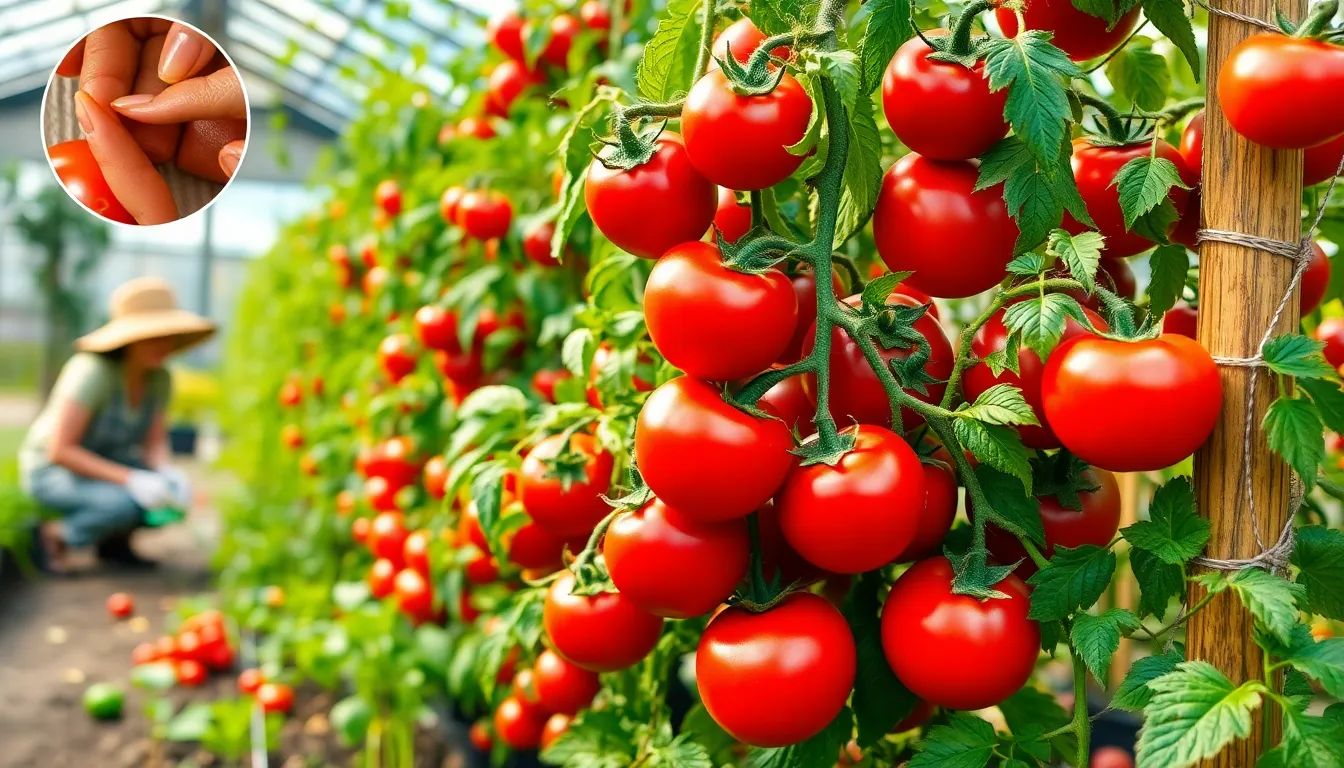Tomatoes are the crown jewel of many gardens, bursting with flavor and versatility, yet growing them can challenge gardeners of all levels. Whether you’re planting your first seed or perfecting your tenth harvest, understanding common pitfalls can turn your tomato-growing journey from frustrating to fruitful.
In the world of tomato cultivation, even the smallest missteps can lead to disappointing results, with cracked skins or bland flavors. This article will illuminate some of the frequent mistakes made by both novices and seasoned green thumbs, guiding you towards a more bountiful harvest.
You’ll discover practical tips to enhance your tomato-growing skills, from avoiding overcrowding to mastering the art of watering. Our aim is to empower you with the knowledge to nurture robust plants that yield luscious, ripe tomatoes, making your garden the envy of the neighborhood.
Improper Watering Techniques
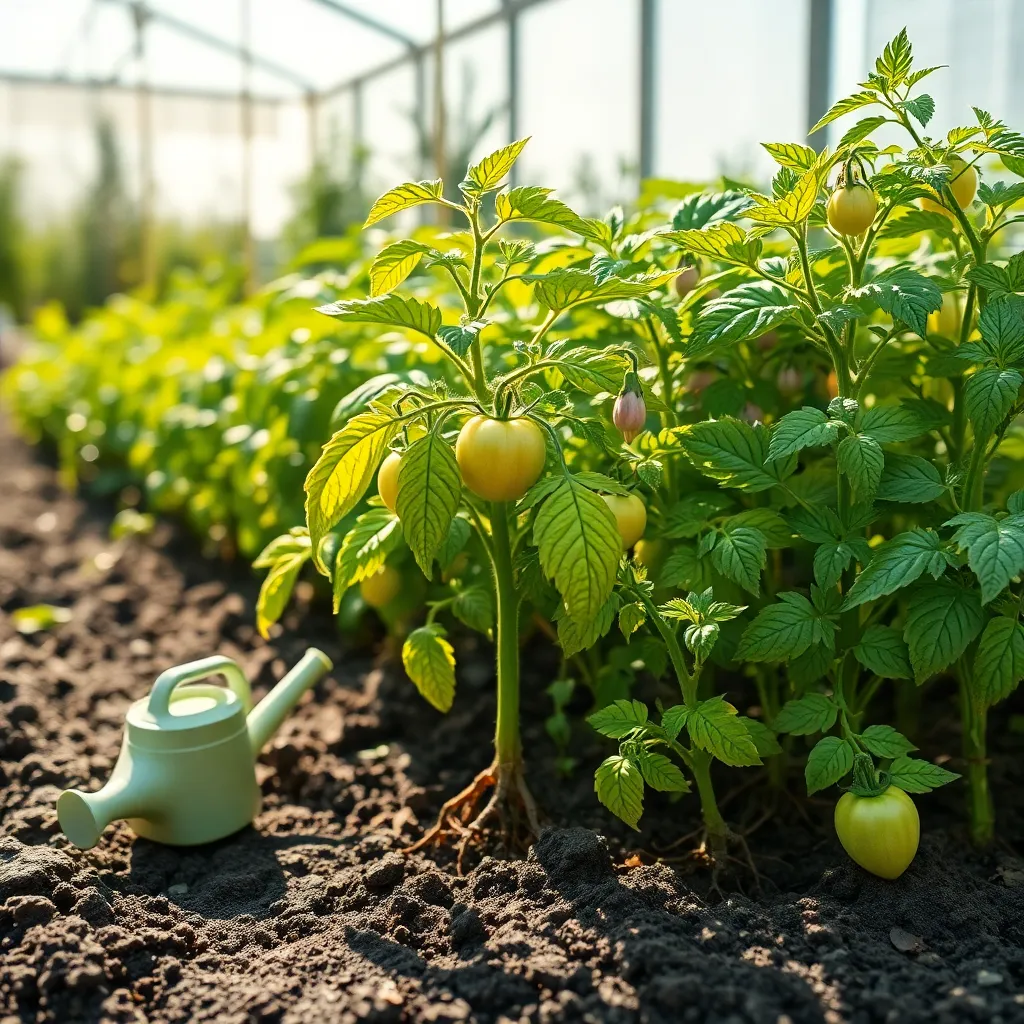
Watering tomatoes improperly is a common mistake that can lead to various issues, including root rot and nutrient deficiencies. It’s essential to water deeply and consistently to encourage strong root systems and healthy plant growth.
Beginners often make the error of watering too frequently but not deeply enough. Instead of daily shallow watering, aim to water every few days, ensuring the water penetrates at least six inches into the soil.
For experienced gardeners, focusing on the plant’s growth stage can optimize watering techniques. During fruiting, tomatoes require more water; consider increasing the frequency slightly but maintain that deep soak to support fruit development.
Understanding soil type can also improve watering practices. For sandy soils, water may drain quickly, necessitating more frequent watering, while clay soils retain moisture longer and require less frequent irrigation.
- Use mulch around the base of your plants to retain moisture and reduce evaporation.
- Water early in the morning to minimize evaporation and fungal diseases.
- Consider drip irrigation or soaker hoses for consistent moisture delivery directly to the roots.
Lack of Sunlight Exposure
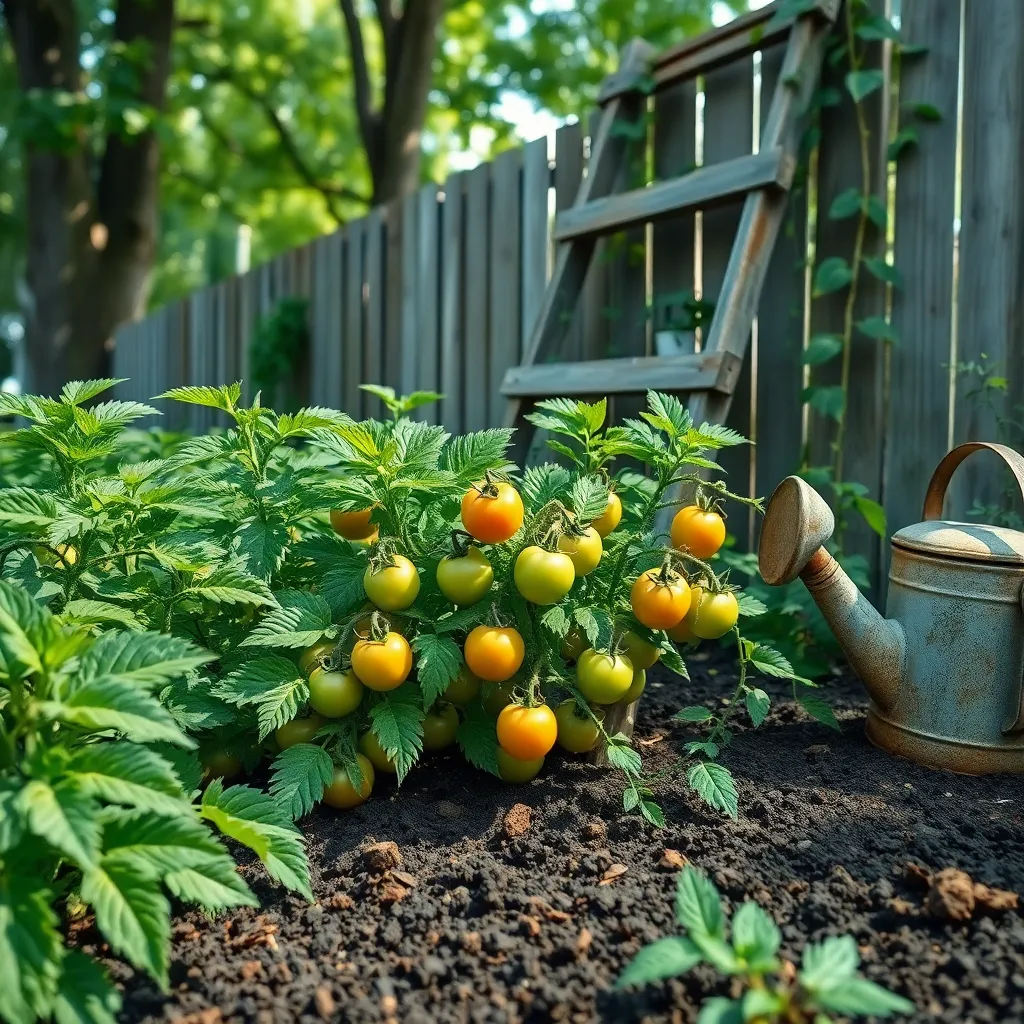
Tomatoes thrive in full sunlight, needing at least 6 to 8 hours of direct sun per day to develop robustly. If your garden area is shady, consider relocating your plants or using reflective materials to maximize light exposure.
For gardeners with limited space, container planting allows you to move tomatoes to sunnier spots. Use containers that are at least 18 inches in diameter to provide enough room for roots and ensure proper drainage.
Monitoring the sun path in your garden can reveal the best locations for planting. Pruning nearby vegetation or using trellises can help prevent overshadowing and ensure your tomatoes receive the necessary light.
Advanced gardeners might use grow lights to supplement natural sunlight, especially in areas with long winters. Choose lights that offer a full spectrum to mimic sunlight, and position them 12 to 18 inches above the plants for optimal growth.
Nutrient Deficiency Symptoms
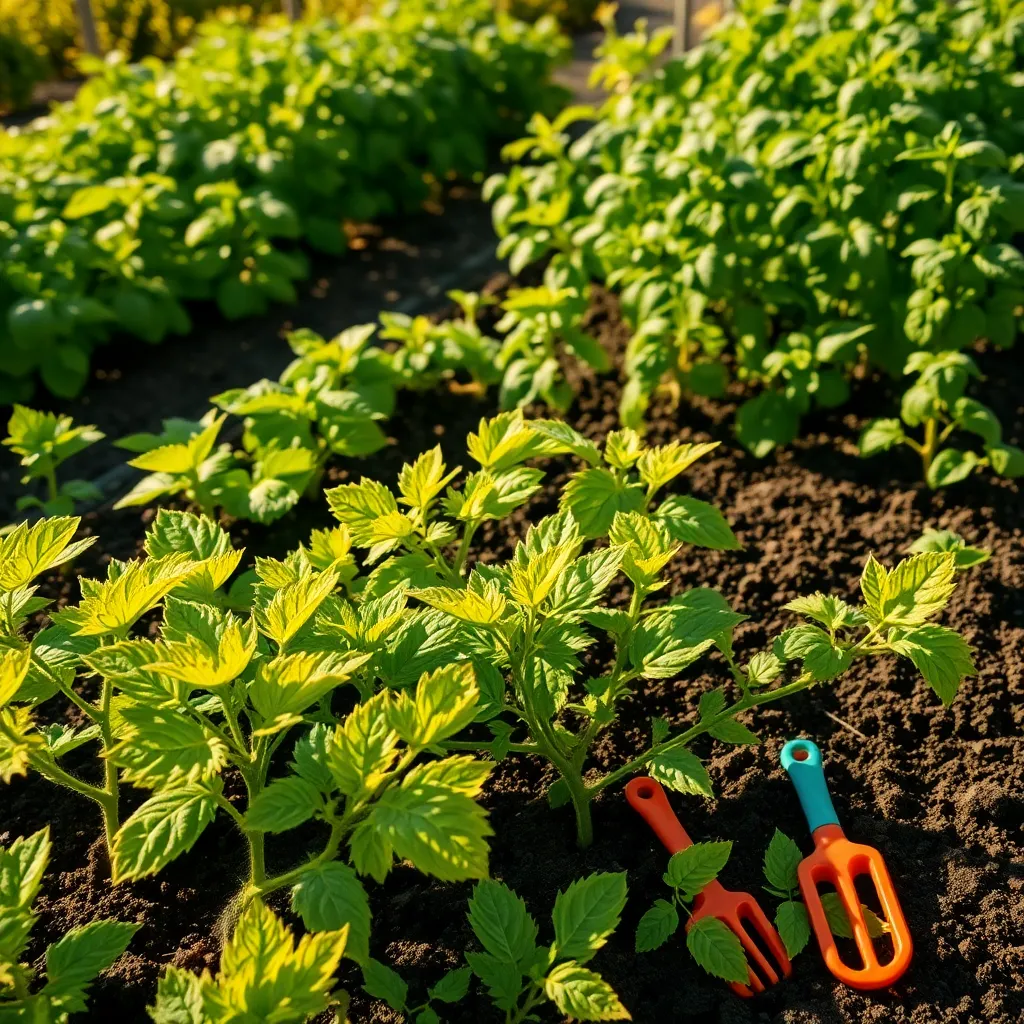
Tomato plants often show signs of nutrient deficiencies, which can hinder their growth and fruit production. Yellowing leaves, poor fruit set, and stunted growth are common symptoms that alert gardeners to take action.
To address these issues, it’s crucial to understand the specific nutrient your tomatoes might be lacking. For example, yellowing leaves often indicate a nitrogen deficiency, which can be corrected by applying a balanced fertilizer.
Calcium deficiency, on the other hand, leads to blossom end rot, a condition where the fruit develops dark, sunken spots. To prevent this, ensure your soil has adequate calcium by adding lime or gypsum and maintain consistent watering to help the plant uptake nutrients efficiently.
Experienced gardeners recommend conducting a soil test at the start of the season to identify any nutrient deficiencies. This allows you to amend the soil appropriately, ensuring your tomato plants have a strong start with all the necessary nutrients.
Inadequate Support Structures
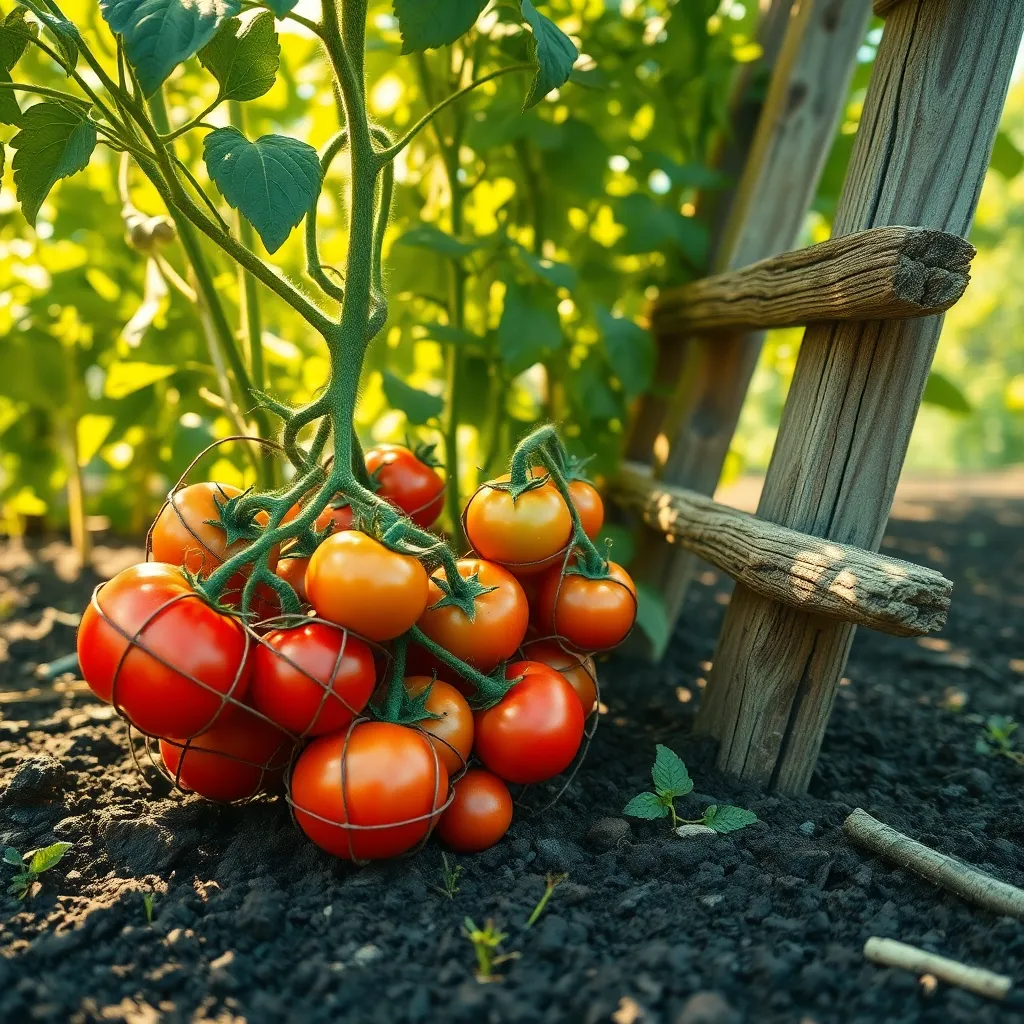
Without adequate support structures, tomato plants can quickly become unruly and difficult to manage. Proper support not only keeps the plants upright but also improves air circulation, reducing the risk of disease.
Consider using sturdy cages or trellises to provide the necessary stability. Tomato cages are ideal for determinate varieties, while indeterminate types benefit more from tall trellises or stakes.
For beginners, investing in a few good-quality tomato cages can save time and effort later in the season. Secure the cages in place when the plants are young, as trying to add them later can damage the roots.
Advanced gardeners might experiment with the Florida weave technique, which involves weaving twine between stakes to support multiple plants. This method is efficient and allows for easy access to the tomatoes for harvesting.
Ignoring Pest and Disease Signs

One common mistake when growing tomatoes is ignoring the early signs of pests and diseases. Catching these issues early can prevent widespread damage and save your plants. Regularly inspect your tomato plants for unusual spots, holes in leaves, or wilting. These are often indicators of pests like aphids or diseases such as blight.
Begin by checking the undersides of leaves, where many pests tend to hide. Use a magnifying glass if necessary to identify tiny insects that might be causing harm. If you notice any problems, act swiftly by removing affected leaves and using organic pest control methods. Neem oil or insecticidal soap can be effective for many common tomato pests.
Ensure your tomato plants are spaced properly to allow for good air circulation, which can help reduce the likelihood of disease. Crowded plants can trap moisture and create a breeding ground for fungal diseases. It’s also beneficial to water your tomatoes at the base instead of from above to keep the foliage dry.
For more advanced gardeners, consider introducing beneficial insects like ladybugs to your garden. These natural predators can help keep pest populations under control. Additionally, rotating your crops each year can prevent soil-borne diseases from taking hold. Keeping a vigilant eye on your plants and responding quickly to any problems will ensure a healthy and bountiful tomato harvest.
Conclusion: Growing Success with These Plants
In nurturing your relationship, much like tending to a thriving garden, avoiding common pitfalls can lead to a flourishing connection. We’ve explored five key concepts: understanding the importance of communication, recognizing the value of shared goals, maintaining emotional intimacy, managing conflicts constructively, and fostering mutual respect. Each of these elements forms the foundation of a robust relationship, ensuring it grows resilient and rewarding.
As your actionable next step, choose one area to focus on this week—perhaps initiating a heartfelt conversation or planning a shared activity to strengthen your bond. Remember, progress in relationships, like gardening, is achieved one small step at a time.
For future reference, bookmark this article as your relationship guide, a handy reminder of the essential components that nurture love and understanding. A healthy relationship is a journey, and with continued effort, it promises a future ripe with connection and happiness.
Embrace these insights today, and you’ll be on your way to cultivating a relationship that not only withstands the test of time but blossoms beautifully with each passing season.

